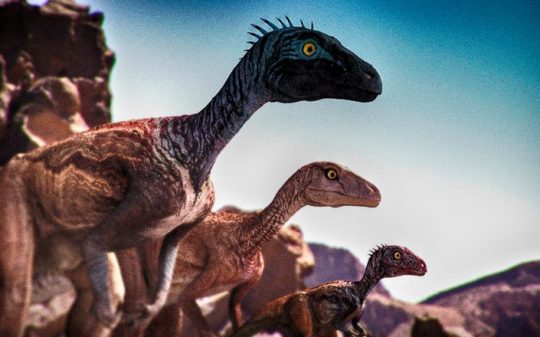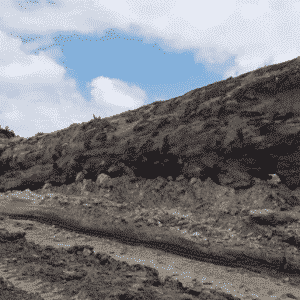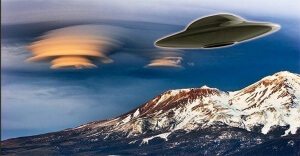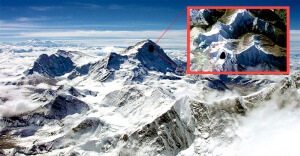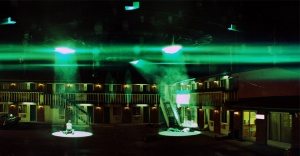The Cretaceous-Paleogene extinction event is the most famous case of mass destruction because it was greatly popularized by mankind’s vested interest in dinosaurs. While the scientific consensus is that no dinosaur survived to our times, there are multiple cryptid sightings that would suggest at least some of them might still be around. Below you will find five of the strangest sightings related to this subject.
Some 66 million years before our time, the Earth was struck by a 6 mile wide space rock that was going 45,000 miles per hour. The devastating impact was more than two million times more powerful than the Tsar Bomba, the biggest explosive device mankind ever built.
But it wasn’t the blunt force of the hot that killed off the majority of our planet’s animal life. In the period following the asteroid hit, the world was engulfed in flames, shook by earthquakes and drowned in emissions from volcanic eruptions. The unrelenting global acid rain that followed, coupled with the atmospheric ash blocking sunlight resulted in plant life being greatly diminished. As the plant eaters died, they determined the fall of the entire food chain, rapidly causing the extinction of the behemoths that ruled the planet for over 160 million years. The dinosaurs were gone forever. Or were they?
Mokele Mbembe
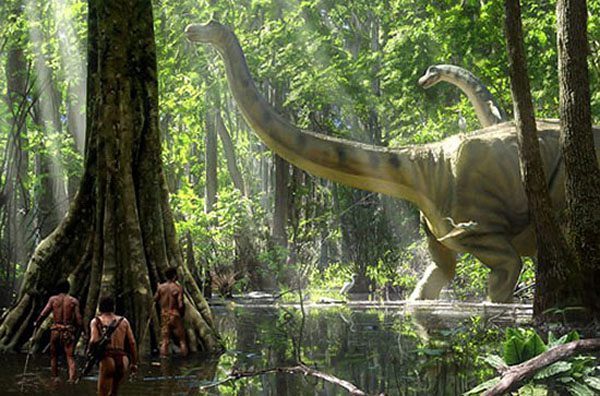
The deepest river in the world is the African Congo and the surrounding jungle is the world’s second largest. Modern humans have explored only a fraction of the Congo rainforest so it is pretty clear that there are countless secrets still left to discover.
Since times immemorial, tribes who make their home in the Congolese forests have been religiously passing down a legend that makes them shiver. They unwillingly talk about Mokele Mbembe, a beast whose name literally means “the one who stops the flow of rivers.” Tribe members who swear they’ve seen it describe a fearsome creature with the body of an elephant, a long tail and a neck ending with a small head. Although the cryptid feeds on plants, it is said to be highly territorial and therefore aggressive.
Mokele Mbembe prefers resting its cumbersome body in deep waters and would sometimes flip over and drag under any boat that dared cross certain river bends.
This description fits an animal that resembles extinct sauropods such as the Diplodocus or Argentinosaurus.
The earliest expedition to go in search of this fabled beast took place in 1776. While the members of the expedition failed to discover the creature, they did bring back caster prints. The circumference of Mokele Mbembe’s paws measured over three feet, lending further credence to the idea that it is indeed a dinosaur. Over the course of the following centuries, more than 30 official expeditions attempted to capture the cryptid or its image, but they could neither prove nor dismiss its existence. All the while, the tribal stories about Mokele Mbembe still strike campfire fear in the hearts of those who hear them.
Thunderbirds
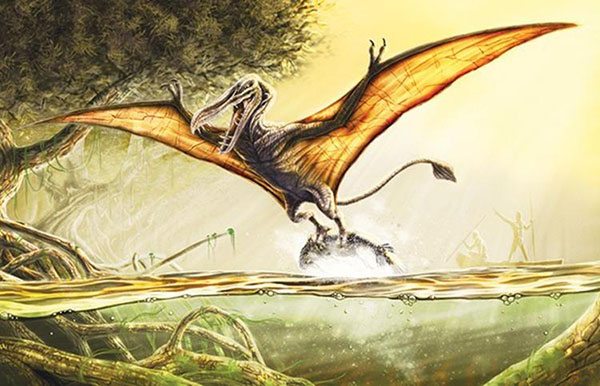
Pterosaurs or winged lizards were commonplace in the world of dinosaurs. Their specialized wings allowed them to traverse vast distances of the Cretaceous without expending too much effort. The largest pterosaur, Quetzalcoatlus had a wingspan the size of a bus and could easily pick up a human and swallow him whole.
Between 2001 and 2002, several Pennsylvanians forwarded reports detailing their encounters with a huge, long-necked flying creature that resembled a bird but had one key distinction: it lacked feathers. The witnesses description was reminiscent of a wave of sightings that occurred in Texas in 1978 and 1982.
Similar sightings have been reported halfway around the world, in the Congo River basin, where locals told tales of a creature making its nest in the high hills. The large flier reportedly had such a bad attitude towards boats and their passengers that it was nicknamed Kongamato, meaning the Overturner of Boats. It was most active at dusk, when it probably went out to feed. Cryptozoologists are convinced ts smooth skin and teeth-packed beak are a clear indicator that the animal could very well be a pterosaur.
A 1988 expedition that went looking for the enigmatic creature turned up nothing except for a quick glimpse that revealed a huge black shadow with white stripes gliding in the distance. Short as it was, the sighting was enough to cement the idea that the majestic Quetzalcoatlus might not be so extinct after all.
Giant Snakeseyv
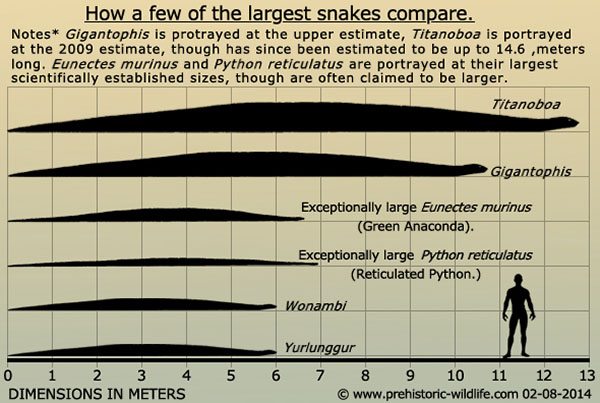
No, snakes weren’t dinosaurs but they were already here when the dinosaurs arrived. And while palaeontologists haven’t been able to figure out what metabolism dinosaurs had, we do know that snakes slither the same way they did 200 million years ago. But they did grow bigger. Way bigger.
The largest snake to have undulated his body on the face of the Earth was Titanoboa cerrejonensis, which is synonym with 40 feet of pure, constricting terror. That is the biggest specimen according to fossil records that were discovered, but we would be perfectly safe in assuming they could grow even longer.
As over-the-top as that might seem, the South American continent is home to legends of even larger snakes. The Amazon’s murky waters could, in theory, offer them the cover to reach over 150 feet in length. Locals call the giant snake Yacumama, Mother of the Water. No official sighting exists but those who’ve seen it swear on their lives the animal is real.
The longest recorded Anaconda measured roughly 25 feet in length but that doesn’t even come close to the Yacumama’s reported size. If rumors of its existence are true, this serpent could be an undiscovered species of Anaconda or even a surviving T. cerrejonensis. Either way, it doesn’t look like it enjoys publicity so we might never get to see one.
Ngoubou
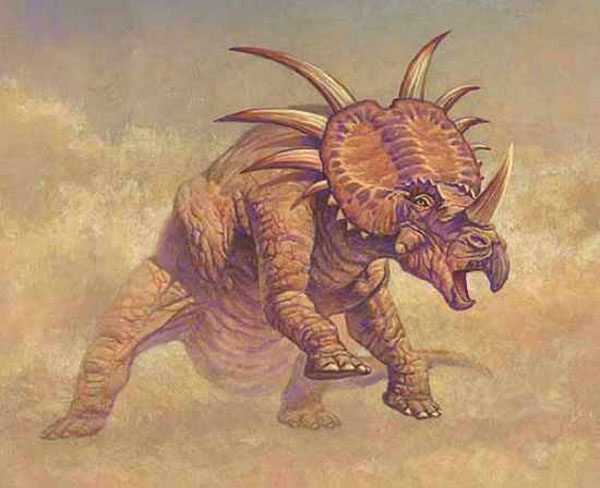
Stories about this African cryptid have only surfaced in recent years, and only by accident. While researching legends about Mokele Mbembe in Cameroon, two cryptozoologists heard a rumor about another massive beast. Members of a local tribe said it footsteps made the earth tremble and its roar scared off predators.
Although smaller in size, the animal was well equipped and aggressive enough to fight rhinos and elephants over territory. Hunters who came face to face with Ngoubou said it looked vaguely similar to a rhino but had six horns arranged in a semicircular manner around a bony frill. You don’t need to be Roy Chapman Andrews to recognize a Triceratops-type dinosaur (like Styracosaurus) when you hear its description.
The cryptozoologists became convinced they were onto something when they showed the tribesmen pictures of dinosaurs. When showed a triceratops, the men said it looked just like Ngoubou, only it had fewer horns. They took the issue very seriously and insisted they weren’t mistaken.
Burrunjor
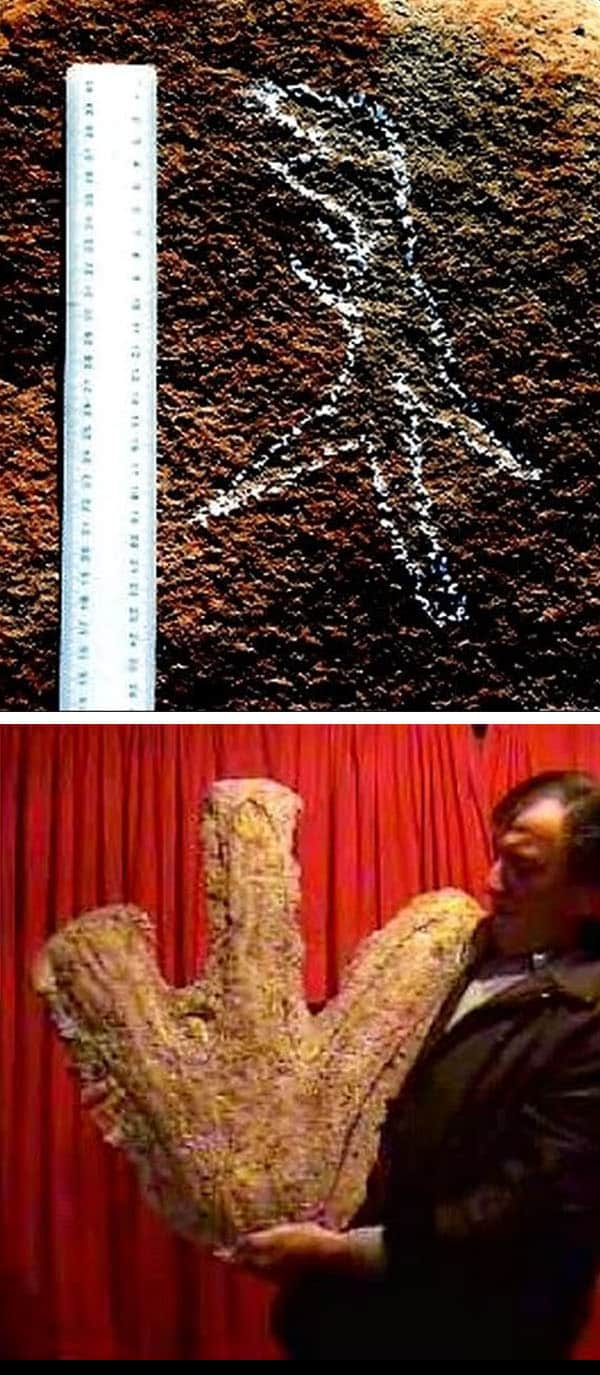
Above: Aboriginal cave painting depicting a Burrunjor. Below, a plaster print recovered by ranchers. Photo Credit: Rex Gilroy
In their heyday, dinosaurs like T. rex and Allosaurus were the top dogs. If they would have been present when man made his first appearance, it would have probably been the last one. Nowadays, it seems apex predators such as these guys are only present in movies and our imagination. And don’t forget Australia.
The Aboriginal people of Australia huddle around the fire to sing legends about an enormous reptile that is basically a pair of giant jaws walking around on two feet. Its only shortcoming are its two tiny arms.
During the 1950s, it seems this creature made a leap from legends into reality when ranchers looking for their missing cattle found its tracks in the dirt. The footprints were far too large to have been left behind by any known Australian creature so, naturally, the farmers recoiled in fear when they heard commotion near the river. Ignoring the loud, guttural grunts, one of them decided to investigate but came back running when he spotted the silhouette of a humongous bipedal lizard disappearing into the scrappy bushes.
The next day, their missing cattle turned up. Some bitten in half, others in smaller pieces, all very dead. That sounds like a perfect description of T. rex behavior.
Strange as they are, sightings such as these ones are far from being isolated events. Encounters with scaly and feathery beasts resembling dinosaurs come from many places and times. Legends involving the Loch Ness monster and its Icelandic counterpart, Lagarfljótsormur date back centuries. Native Americans in modern-day Canada have been retelling stories about Ogopogo since their oral history can remember. Strange things might be lurking in Earth’s dark forests and deep oceans, things that are eerily-reminiscent of the saurian form.
Photo credit: Swordlord3d/Discovery/DeviantArt
